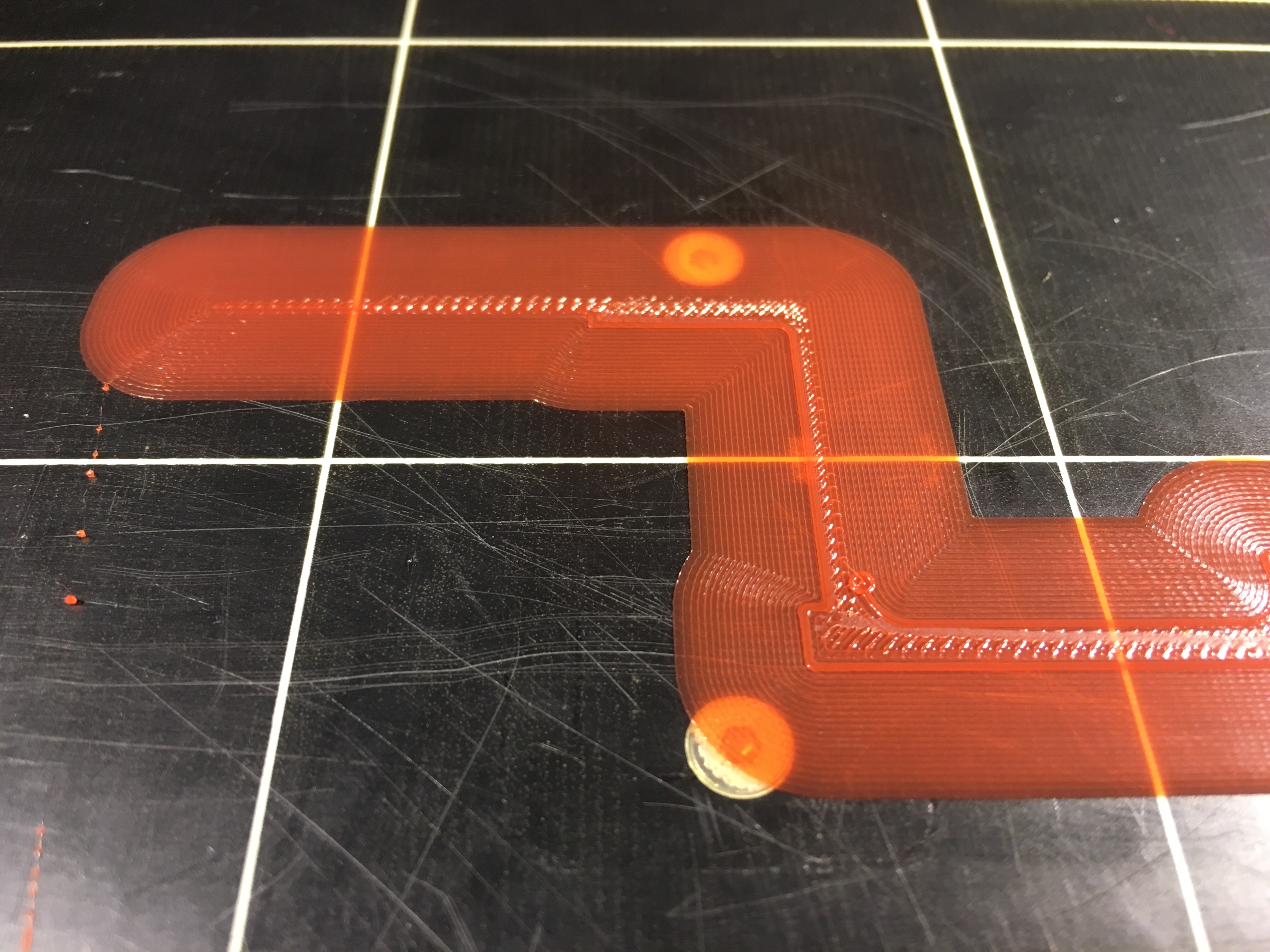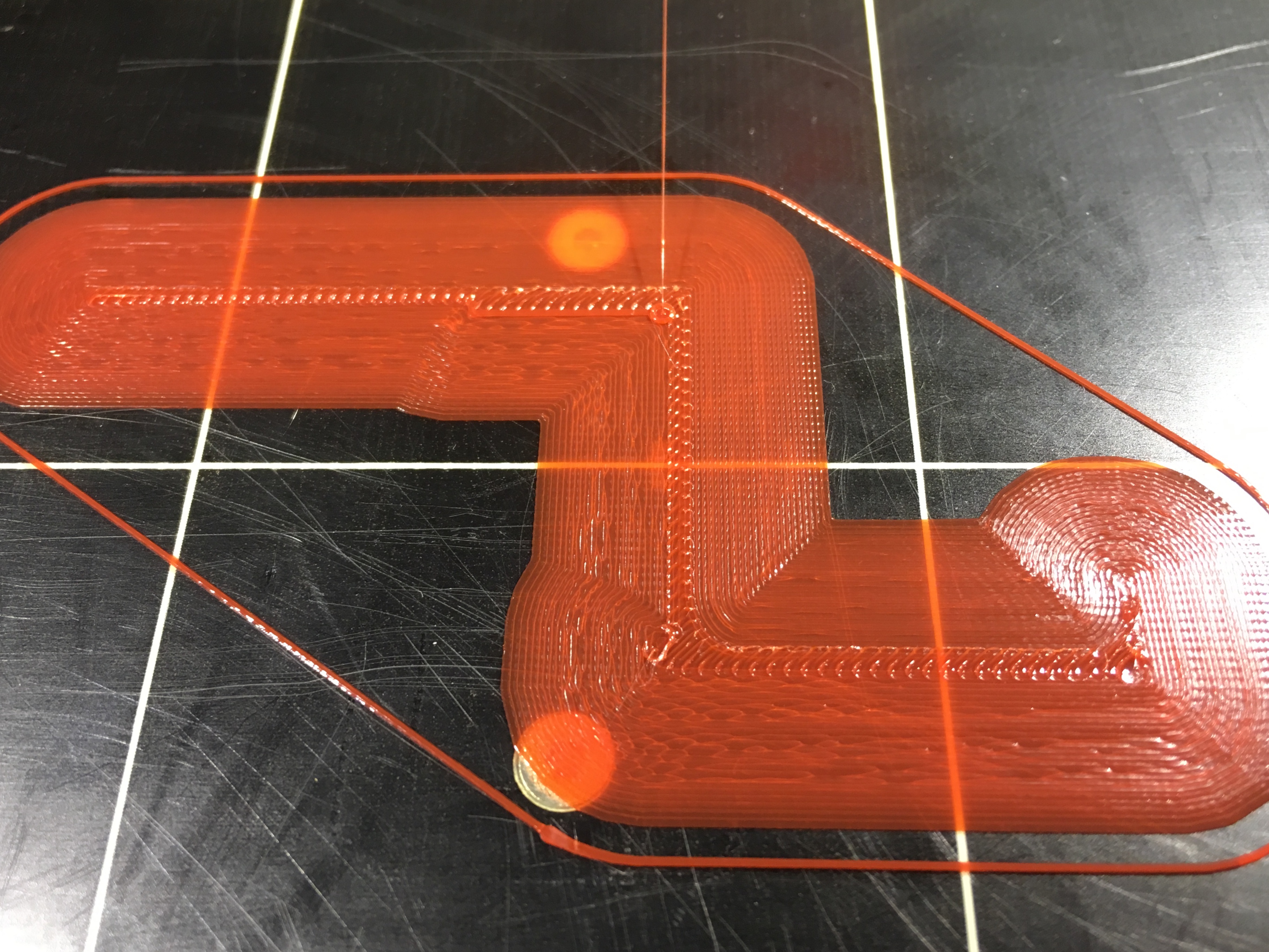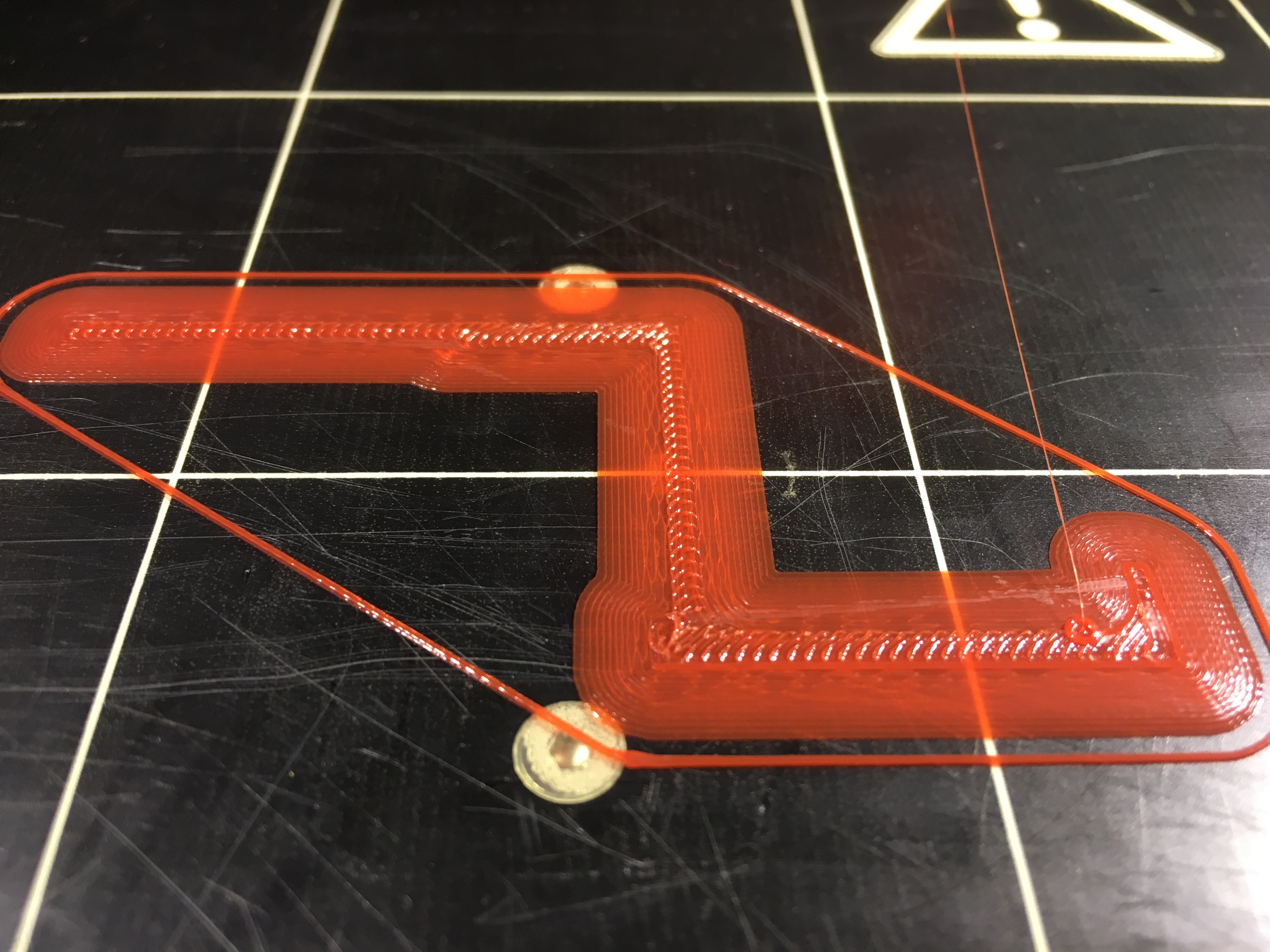Slic3r over-extrusion
I use Cura almost exclusively, both because I find the interface is easiest and because it seems to produce consistently more reliable results than S3D or Slic3r. And beyond that, I know all the settings better in Cura than in the other two, so I typically know what to change to get the desired outcome. And I find Slic3r choses dumb toolpaths a lot, like orphaning a thin wall on either end so it's printed alone without any attachment at the ends and flaps in the breeze. Anyway...
I'm trying to dig in with Slic3r because of the support for per-filament gcode and therefore K factor with the new linear advance support. Can't do that in cura. But I'm getting obnoxious results. In Cura, my settings are 1.75mm filament (this section of this spool seems to be spot-on), 100% flow, and I know the live Z adjust is dialed in spot-on since skirts come out perfect thickness. And then Temp 215/55C using PLA. With those settings, I get first layers that look like this:
Pretty much perfect - the skirt is spot-on, and there's a little over-extrusion finning on the first skin layer, I think mostly because it's a thin section with lots of back and forth - one reason I want to take advantage of linear advance.
Now, moving to PrusaControl, just as a baseline (so I guess, should be equivalent to all the default settings in slic3r?):
The finning is there. It's worse than Cura, but what I'm really concerned about is the sloppy skirt. It rolls all over itself, which I think is why the skin over-extrusion is worse - that thin area is getting invaded by skirt over-extrusion laterally.
This is completely unchanged moving to default settings in Slic3r:
So wary of Cura's default .4mm line width vs Slic3r's .45, I went ahead and changed that. Still the exact same behavior.
So why is Slic3r badly over-extruding compared to the same geometric settings in Cura?
Also - I tested the skirt thickness on all samples, and it closely matched the expected first-layer height, so again, Z offset is not at play here.


